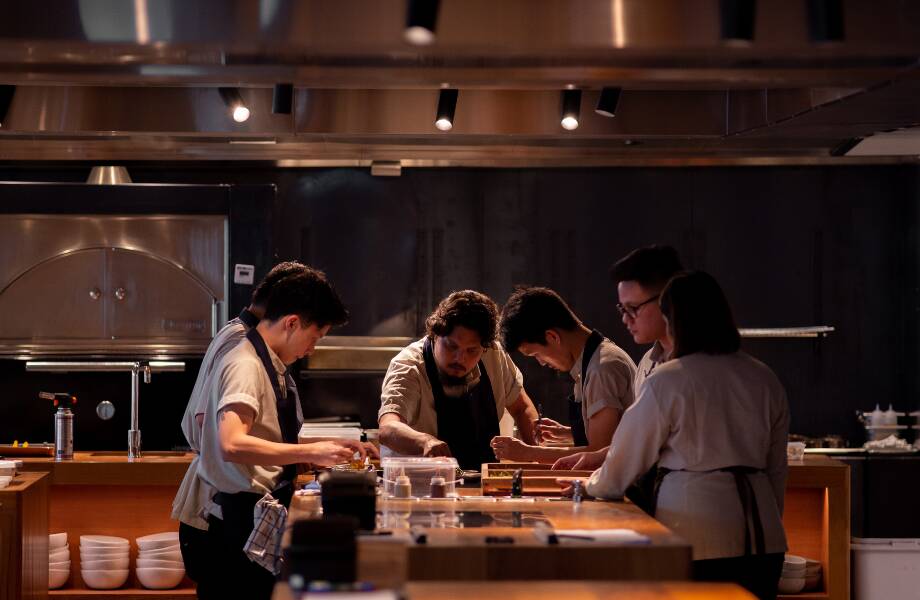If you’ve been keeping up with my column, you’ll notice that I often stop and talk about tea brewing vessels. One of my first articles for RADII was a breakdown of the major ones, and my last article also mentioned the importance of a tea brewer’s vessel. While I mentioned in the last article that there really is no one true vessel, there is one vessel that I like, and one that seems to be favored among professional tea drinkers: the gaiwan.
Gaiwan translates to lidded bowl, and that’s originally all it was: a bowl with a lid on it to keep in the heat. Soups, teas, and herbal teas were all enjoyed from these vessels. The shape of the gaiwan was a little different, and a point of quality was if you turned the lid sideways, could it touch the bottom — this was beneficial because it meant you could push out anything sitting on the bottom of the bowl. While you can still buy gaiwan made for drinking out of, these are of no use as brewing vessels. As the style of drinking tea has changed, so has the shape of the gaiwan.
Related:
 The Vessels and Materials Used in the Perfect Cup of TeaArticle Jul 11, 2017
The Vessels and Materials Used in the Perfect Cup of TeaArticle Jul 11, 2017
In modern times, the common style is to overpack a gaiwan, and this is where the beauty begins. Think of a gaiwan less as something meant for enjoying tea, and more as something that shows you the honest characteristics of the tea leaf being brewed.
Part of the reason for this is that since the gaiwan is filled so high — up to 8 grams of leaf for a 110ml vessel — you really get a concentrated brew. The high leaf-to-water ratio will expose flaws or high qualities of the leaf, which would otherwise get diluted in a large teapot.
This is the main reason the gaiwan is preferred among tea farmers and tea professionals. Their whole lifestyle is based around how much they are buying and selling a tea for, so they need to know with extreme accuracy all the characteristics of a tea, and set a price accordingly.
But there are also small teapots — why not just fill those with tea? The real benefit of the gaiwan comes from its shape.

A classical-style gaiwan being sold in Jingdezhen — you can tell it’s classical in part by the lack of lip with which you would hold a modern gaiwan to pour
“Tea pots are automatic, and gaiwan are stick shift,” an old boss of mine used to say. What she meant was that while teapots are easier to use, you can’t really do as much as you can with the gaiwan, once you learn how to use it. It’s not just the way you use the gaiwan, but also the shape that often makes it preferred over other vessels. The wide bowl shape of the gaiwan allows for much more control of the leaf, and allows for better tea judging.
“Tea pots are automatic, and gaiwan are stick shift,” an old boss of mine used to say
It’s important to not play with the leaves too much when you brew, but there are movements a skilled brewer with a gaiwan will make to better bring out the flavor of the tea. Such movements include physically pushing the leaves once the water has been poured, so that the bottom leaves move toward the top where there is more room to expand. An experienced gaiwan user will control where the water falls into the gaiwan when he begins to brew, and then will control how big of an opening there is through which the tea will be poured. (This is a useful trick when you’re brewing small leaves that you don’t want to fall out.)
Gaiwan offer a level of control and customization that is not as available with the set, closed-off shape of the teapot. The gaiwan doesn’t just benefit the brewer — it is also a useful tool for anyone drinking tea who wants to appreciate the leaves.
Related:
 What You Can Only Learn About Tea in ChinaArticle Jan 22, 2018
What You Can Only Learn About Tea in ChinaArticle Jan 22, 2018
We have five senses, and a tea drinker can use all of them to appreciate tea. In a common Chinese tea session, it is normal for participants to visually examine the leaves, smell them, and even feel the leaves for tenderness. The wide opening of the gaiwan allows for all of these actions to be done with ease.
The sense of smell, in particular, is enhanced by the gaiwan, as it is actually very common to smell the lid of the gaiwan between brews in order to get a reflection of each brew. When you smell the leaves, you are smelling everything they still have to offer, and not just what they gave off during the steep — the wide top of the gaiwan gives you a large surface with which to enjoy the aroma.
Related:
 How to Judge Your Tea, Part 2: Feel, Smell, SoundArticle Aug 15, 2017
How to Judge Your Tea, Part 2: Feel, Smell, SoundArticle Aug 15, 2017
As I said in my last article, there is no one vessel for brewing tea. The vessel used depends on the brewer and the situation. I wrote this article not trying to convince anyone that the gaiwan is the best, but more to explain why it is often used across China. There are aspects of it that fall short of other vessels.
Teapots are much easier to use, for example. While a gaiwan takes time and practice to be used efficiently, a teapot can basically be used by anyone the day they pick it up. Additionally, gaiwan are usually made from porcelain, which does not hold the heat as well as yixing clay teapots; this variable becomes very important in later steepings, when brew times get longer and longer.
I hope after reading this that you can walk away with a better understanding of the gaiwan, and why it is so widely used and appreciated. It may not be the absolute best method for brewing tea, but there is a reason I always keep two gaiwan on me at all times.
Cover image: gaiwan pouring by Anxi farmers
















